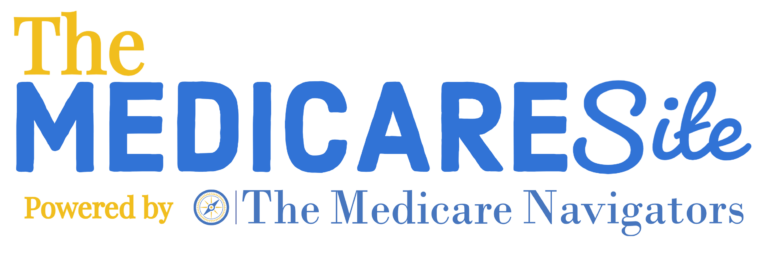Are you looking for low cost Medicare Supplements? Currently, about half of Medicare beneficiaries enroll in a Medicare Supplement plan when they become eligible for Medicare. This is a downward trend due to increasing Medicare Supplement premiums and lower Medicare Advantage premiums. Beneficiaries who are “Team Medicare Supplement” are generally looking for more freedom to access care without a network. They may also be snowbirds who live in multiple states throughout the year. But increasing supplement premiums are creating financial barriers for many. However, there are low cost Medicare Supplement plans that can save you money and still give you flexibility.
In this article, we will cover low cost Medicare Supplements and who can benefit from them.
What Is a Medicare Supplement Plan?
Medicare Supplement plans, aka Medigap, helps cover the gaps in Original Medicare (Part A and Part B). These gaps include your portion of deductibles, coinsurance, and copayments. There are 10 standardized Medigap plans available in most states (labeled Plan A through Plan N). These plans are standardized because they are the same across carriers, so it is easier to compare them. You generally compare prices when shopping the same Medicare supplement plan between carriers.
Which Medicare Supplement plans have the highest premiums?
Plan F and Plan C are generally the most expensive premiums that continue to increase. This is because both plans have been discontinued for anyone turning 65 on or after January 2020. This means the member pool is shrinking, while the average age of policy holders is increasing. This combination quickly increases insurance costs and, inevitably, higher premiums! We recommend steering away from Plan F or Plan C if possible.
Medicare Supplement Plan G is the next highest priced premium. It is also currently the most popular plan since it has the most coverage compared to other plans. You pay a higher premium for this coverage, then after your meet your Part B deductible the plan covers the rest. This can be great for many people, but not everyone can or wants to pay the higher premium.
What are the low cost Medicare Supplements options?
Plan N and Plan K are currently two of the more budget-friendly options. They have a good balance between premium affordability and coverage to ensure you don’t end up with out-of-control medical expenses. The option you choose will depend on your overall health and the type and frequency of medical services you typically use. Plan N will have more coverage, but higher premiums than Plan K. The plan you choose will depend on your current budget and medical use.
Here is a breakdown to compare both Plan N and Plan K.
Low Cost Medicare Supplement Plan N
Plan N is ideal for those who want broad coverage but don’t mind a few small copayments in exchange for a lower monthly premium.
Key Benefits of Plan N:
- Covers 100% of Medicare Part A coinsurance and hospital costs
- After Part B deductible is met, it covers Part B coinsurance, except for:
- Up to $20 copay for office visits
- Up to $50 copay for emergency room visits
- Covers Skilled Nursing Facility care
- Covers foreign travel emergency care
- Does not cover excess charges
Low Cost Medicare Supplement Plan K
Plan K is suited for people who are healthy and rarely seek care but also want protection from catastrophic medical costs with an out-of-pocket maximum. This plan is a good alternative for a Medicare Advantage PPO plan.
Key Benefits of Plan K:
- The plan covers 50% of your portion of the below charges:
- Part A deductible
- Medicare Part B coinsurance (after the Part B deductible is met)
- Skilled Nursing Facility coinsurance
- Part A hospice care
- First three pints of blood
- 100% coverage of Part A coinsurance and hospital costs
- Annual out-of-pocket cap ($8,000 in 2026)—after reaching this, Plan K pays 100%
- Does not cover excess charges
It is important to note that the 50% the plan pays is actually 50% of your portion of Medicare expenses. For example, your portion of Part B coinsurance is 20% of the charges after the Part B deductible. So the plan will pay 50% of your 20%. When billed for medical services, Medicare pays 80%, you pay 10%, and the supplement pays 10% in this scenario.
How much will I pay for Plan N or Plan K?
The monthly premiums for Medicare Supplement plans can vary widely between carriers! But on average, Plan K has a less expensive premium than Plan N. Prices between carriers can also fluctuate drastically from year to year when they release their rate changes. Premiums are also dependent on your age and gender. If you don’t qualify for guaranteed issue, they could consider your health as well.
Due to this fluctuation, it is difficult to say exactly how much plan premiums will cost unless we run a quote with your information. But you can see the average premium prices for Plan G, Plan N, and Plan K below. This is a good example to compare the general price differences. This chart is based on average prices for a 65-year-old female in Arizona.
| Medigap Plan | Average Premium |
|---|---|
| Plan G | $163 |
| Plan N | $118 |
| Plan K | $59 |
We cannot stress enough how important it is to work with an independent agent that can help you compare prices for all carriers in your area. This will ensure you get the lowest price. You can request a quote for the lowest Medicare Supplement plan in your area HERE.






